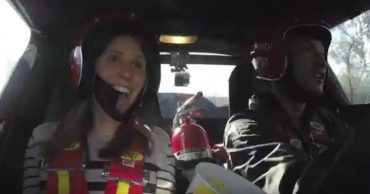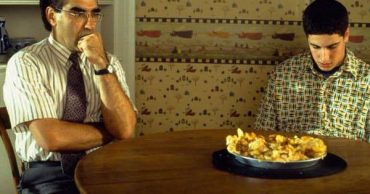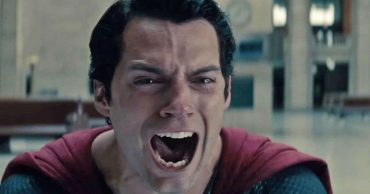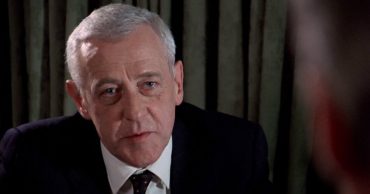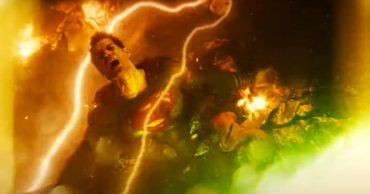
Film noir is easy to identify but difficult to define. However one classifies film noir, as genre, mode, or series, there are requisite qualifier boxes that apply for admission and Out of the Past checks them all. Jacques Tourneur’s 1947 classic “is often described as the quintessential noir. The film contains a near-encyclopedic array of the genre’s devices” (Orr). As such the case, it would be simple to state that for one to know Out of the Past is to know film noir but the intricacies of the form are not only exampled by the film, they are defined by it. One particularly overlooked and often underappreciated element employed in Out of the Past that represents archetypical film noir is the use of “compositional lines” (Belton).
As a rule “noir films are notably high contrast with asymmetrical tendencies and dramatic use of light and shadow” (Sehayek). One way that Tourneur masterfully achieves these characteristics is by his brilliant use of compositional lines. A common film noir use of composition lines is the “quintessential striped light filtered through [Venetian] blinds” (Sehayek). Jacques Tourneur does manipulate composition lines through the utilization of blinds, shadow and window fixtures, however, in Out of the Past he deviates slightly from those traditional film noir devices. Unlike many films noirs, Out of the Past features many scenes dependent upon natural light. Even bathed in organic illumination, Tourneur still succeeds in achieving the trademark film noir tension using compositional lines that results in completing the visual effect known as “static composition”. The basis of static composition are the “horizontal/vertical focal points and typically consists of mainly horizontal and vertical lines” (Koski).
Out of the Past utilizes compositional lines, both vertical and horizontal, through the entirety of the film. A perfect example of Tourneur’s “obsessive attention to the careful composition of each frame” (Clute & Edwards) occurs at the 31:13 mark of the film in the form of a single shot not more than two seconds in length. As Robert Mitchum and Kirk Douglas stroll towards the former’s Acapulco hotel cocktail lounge, the sequence cuts to a medium long shot of Mitchum’s point of view to show a female figure dressed all in white, standing at the border of the lounge with her back to the encroaching figures. With this one shot, the effectiveness of compositional lines are put on dramatic display.
This entire shot has one objective and that is to draw every attention to the woman in white, presumably Jane Greer, which would translate to fatal disaster. The tension is palpable as the viewer, and by proxy Mitchum, has no way of knowing if the woman is Greer. Thankfully for Mitchum, the next shot shows the unknown woman as she turns to reveal she is not Greer and disappears from the frame.
The single shot of the woman with her back to the camera is truly a master class of the use of compositional lines. The sole purpose of the shot is the isolation of the solitary woman in an effort to “generate anxiety” (Moura) and to “heighten dramatic action” (Clute & Edwards). To achieve this effect, the mise-en-scène must be totally committed to highlighting the woman’s presence.
To begin with, the entirety of the shot is perfectly divided as light and dark with the woman serving as the dividing line. The top left of the frame boasts a neon lit sign while the bottom right of the shot emphasizes dark elements. This essentially traps the figure between light and dark. The right side of the shot is filled by a light colored brick wall, each brick encompassing compositional lines that divert the audience’s eye to the desired object. The dark beams on the ceiling serve as horizontal lines, framing the woman directly underneath. The liquor bottles, liquor shelves and the studs for the shelves at the background of the shot all serve as composition lines conveying the feeling that the woman is indeed only steps away.
The use of deep focus also gives the background equal importance in the composition of the shot conveying that the woman’s recognition is imminent, again infusing uncomfortable strain. In the lower right portion of the frame, a dark desk sits with a section extended, effectively a horizontal composition line directed toward the central figure. At the desk sits a chair with a design carved in an upward fashion in the legs leading the audience’s eye line directly into the woman. At mid frame, slightly In front of the woman against the light colored brick wall sits a dark chair with vertical stripes as the central design. Just above, hanging on the light colored brick wall is a dark colored Navajo rug with horizontal stripes. The vertical stripes on the black chair direct the viewer’s eyes above to the horizontal stripes on the rug which directs the viewer’s attention to only one place, directly left to the mysterious woman. As the majority of the composition lines are horizontal or vertical, the effect achieved is static composition. Because static composition is realized, the prize of the shot, the woman, is indeed directly “in the middle of the frame as the symmetry of the shot intensifies the situation” (Moura).
Any person who has even the slightest working knowledge of film noir and who has seen the film Out of the Past would recognize that this film does not merely possess characteristics of film noir, it fully embodies it. A primary ingredient in the mixture that is film noir is “its ability to make audiences uneasy” (Belton). This trait is exhibited flawlessly in Out of the Past by Jacques Tourneur’s use of composition lines. As illustrated in the previously mentioned scene, every effort is made by Tourneur to manipulate the mise-en-scène to create composition lines to funnel the focus upon the object of attention, creating tension and anxiety within the scene. To read between the lines, perhaps it’s not most important how high the gallows are built but the lines that compose them.
Works Cited:
- Belton, J. American Cinema/American Culture. New York: McGraw-Hill, 2013. 223, 226. Print.
- Clute, S. & Edwards, R. (July 2, 2005). Episode 1: Out of the Past. Retrieved October 24, 2018
- Koski, M. (March 28, 2016). Static and Dynamic Composition. Retrieved October 26, 2018
- Moura, G. (2018). Elements of cinema: Composition. Retrieved October 25, 2018
- Orr, C. (July 13, 2004). The Movie Review: ‘Out of the Past’. Retrieved October 25, 2018
 Follow Us
Follow Us
